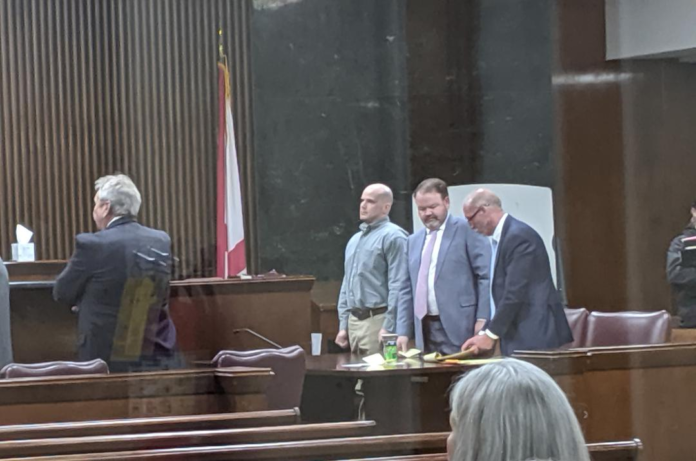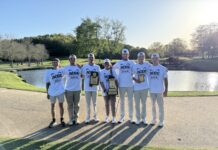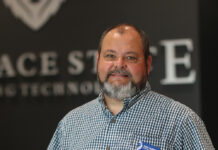
Edited Jan. 30, 3:03 p.m. to correct “The paramedic admitted that severe low blood sugar could cause a person to smell like alcohol but added that a blood test conducted on Meeks showed a normal blood sugar level.” to “The paramedic admitted that severe high blood sugar could cause a person to smell like alcohol but added that a blood test conducted on Meeks showed a normal blood sugar level.”
CULLMAN, Ala. – Testimony in the trial of Bremen resident Bradford Neal Meeks, 29, continued Wednesday at the Cullman County Courthouse.
Meeks is charged in the May 7, 2017 vehicle crash that killed Cullman High School student Curtis “Curt” James Wilson, 15. Meeks was indicted in October 2017 on charges of reckless murder, DUI, DUI with blood alcohol concentration .08 or greater, unsafe lane change, driving on the wrong side of the road, possession of open container of alcoholic beverages in a motor vehicle and third-degree assault.
Wednesday, jurors heard from the majority of the prosecution’s remaining witnesses, including eyewitnesses to the crash, emergency responders and the physician who saw Wilson at Children’s of Alabama in Birmingham.
Husband and wife Leeroy and Cynthia (Cindy) Fortner took the stand consecutively, giving their eyewitness accounts of the accident from behind Meeks’ red Ford Ranger, west-bound on County Road 222. Their stories were fairly consistent, recounting that:
- They pulled onto Alabama Highway 69/Cherokee Avenue and headed southwest behind a red truck whose driver would later be identified as Meeks.
- They got into the turn lane at the County Road 222 to turn onto that road, and Meeks appeared to be headed straight, toward Good Hope.
- Meeks then made a hard right turn onto County Road 222, almost hitting another car that was approaching the intersection from 222.
- The truck veered from one lane to the other on County Road 222, speeding up and slowing down as the Fortners followed and observed.
- A short distance east of Van’s Sporting Goods, in front of which the deadly crash occurred, Meeks swerved into the oncoming lane and did not return to his lane before the crash.
- A small white car which “resembled a Toyota Camry” coming from the opposite direction in front of Curt Wilson’s mother Ashley Wilson’s truck swerved into the Fortners’ lane to avoid Meeks and got back into its lane after passing him.
- Ashley Wilson, following “30 to 50 yards” behind the still unidentified white car, swerved as well, but Meeks’ truck turned in the same direction and struck the truck she was driving. Leeroy Fortner said that “both of them went vertical” and the resulting scene in front of Van’s was “just a mess.”
- The Fortners stopped, the husband getting out and running toward Ashley Wilson’s truck while the wife positioned her car to block traffic and turned on her flashers. Cynthia Fortner then walked to the Van’s parking lot until her husband motioned for her to come to Ashley Wilson’s truck.
Leeroy Fortner attempted to aid Ashley Wilson, and said, “All she could do was cry and ask about her baby.”
After his wife arrived, he then went to see about the other driver, discovering that Meeks “wasn’t in near as dire need” as Wilson and her son. He described Meeks as having “drooped and glassy” eyes, slurred speech and smelling of alcohol.
On cross examination, defense attorney Johnny Berry pointed out that Leeroy Fortner knew the Wilson family. Fortner specified that he knew Mark Wilson, Ashley Wilson’s ex-husband, but did not know Ashley Wilson when he encountered her at the crash site. Berry postulated that head injuries sustained in the crash could make a person seem intoxicated, and told Fortner bluntly, “You never saw him drinking.”
Defense co-counsel Brandon Little asked Cynthia Fortner if there were other cars around Meeks when she saw him on Cherokee Avenue, and she replied that there were none. Little concluded his cross examination by subtly challenging the detailed consistency of the two witnesses’ accounts, pointing out that, as a couple, the Fortners had time to talk to each other about the incident before giving their written statements to an Alabama State Trooper the next day.
Prosecutors then called to the stand Dr. Annalise Sorrentino, a UAB professor and the pediatric emergency specialist who was on duty at Children’s of Alabama the evening Curt Wilson was brought to the hospital’s emergency room. A nationally-recognized lecturer in pediatric emergency medicine, she was sworn in as an expert witness.
With Sorrentino on the stand, prosecutors entered Curt Wilson’s ER chart into evidence. The doctor presented a detailed account of Curt Wilson’s injuries, noting mainly that, while he had no obvious external signs of major trauma, he had head injuries, no pulse (CPR was administered enroute and continued to the ER), and decreased breath sounds on one side when being bagged. He was pronounced dead, according to Sorrentino, of “blunt force trauma.”
On cross examination, Berry noted that “blunt force trauma” is a vague term, and that no tests were run on Curt Wilson.
Sorrentino countered, “He was never stable enough.”
Berry argued that, in a criminal case, an autopsy should have been performed. Then, pointing his finger at Sorrentino, he stated, “You can’t testify with medical certainty as to cause of death without running tests.”
The prosecution then turned to emergency responders:
- State Trooper Rodney Wallace, who had been dispatched to the wreck, described the scene he saw when he arrived.
- Cullman Emergency Medical Services (EMS) paramedic Will Waters described the extrication of Curt Wilson from the vehicle, saying, “This is probably the most difficult extrication I’ve had in 20 years.”
- Cullman EMS Director and Air Evac Lifeteam flight medic James Curtis described intubating Curt Wilson while he was still pinned in the wreckage, noting that his respiration was “slow and inadequate to sustain life.” James Curtis began performing CPR after Curtis Wilson was removed from the truck, then flew to Children’s with the boy, starting CPR again when Wilson went back into cardiac arrest.
The defense team did not cross examine the first three responders but did question Cullman EMS paramedic Enoch Hayes when he took the stand to share his on-scene assessment of Meeks. Hayes stated that Meeks did seem to be aware of the wreck, was able to give his name or other personal information and smelled of alcohol. The paramedic admitted that severe high blood sugar could cause a person to smell like alcohol but added that a blood test conducted on Meeks showed a normal blood sugar level.
On cross examination, Little stated that the written EMS record noted only the smell of alcohol and no other signs of intoxication, and that certain notes in the report seemed to point to the opposite. Then, under prosecution redirect, Hayes told the jury that the EMS written report would contain only information pertinent to medical treatment.
Prosecutors are set to present their last witness Thursday morning before turning over the case to the defense.
Read about the first day of testimony here.
Copyright 2020 Humble Roots, LLC. All Rights Reserved.




















